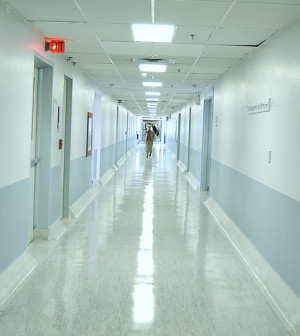- Skip Storing This Everyday Product in the Fridge Door
- Green Tea + B3 Pairing May Boost Brain Health
- Navigating Your Midlife Crisis: Embracing New Possibilities
- City Raccoons Showing Signs of Domestication
- Mapping the Exposome: Science Broadens Focus to Environmental Disease Triggers
- One Week Less on Social Media Linked to Better Mental Health
- Your Brain Changes in Stages as You Age, Study Finds
- Some Suicide Victims Show No Typical Warning Signs, Study Finds
- ByHeart Formula Faces Lawsuits After Babies Sickened With Botulism
- Switch to Vegan Diet Could Cut Your Greenhouse Gas Emissions in Half
Leading Doctors’ Group Wants to Ban Prescription Drug Ads

Direct-to-consumer advertising for prescription drugs and medical devices drives up health care costs and should be banned, the American Medical Association said Tuesday.
Currently, ads for drugs to treat diabetes, depression, impotence and more deluge TV viewers. This drives demand for expensive treatments, the nation’s most influential doctor group said when it adopted the new policy.
“Today’s vote in support of an advertising ban reflects concerns among physicians about the negative impact of commercially driven promotions, and the role that marketing costs play in fueling escalating drug prices,” Dr. Patrice Harris, the association board chair-elect, said in an AMA news release.
“Direct-to-consumer advertising also inflates demand for new and more expensive drugs, even when these drugs may not be appropriate,” she added.
Hoping to make prescription drugs and medical devices more affordable, the new policy also calls for a physician task force to study the issue, a campaign to demand choice and competition in the drug industry, and greater transparency in prescription drug prices and costs.
The United States and New Zealand are the only countries that permit direct-to-consumer ads for prescription drugs, according to the AMA.
This type of advertising is big business. Ad spending by drug makers increased 30 percent from 2012 to 2014, reaching $4.5 billion, according to market research firm Kantar Media.
Meanwhile, prices of generic and brand-name prescription drugs have risen steadily in recent years, including a 4.7 percent increase in 2015, reported by the Altarum Institute Center for Sustainable Health Spending.
The high cost of prescription drugs is the top health care priority for Americans, according to a Kaiser Family Foundation report released last month.
“Physicians strive to provide the best possible care to their patients, but increases in drug prices can impact the ability of physicians to offer their patients the best drug treatments,” Harris said.
When prescription drugs are unaffordable and subject to coverage limitations by the patient’s health insurance plan, care can be compromised, she added. “In a worst-case scenario, patients forgo necessary treatments when drugs are too expensive,” she noted.
Pharmaceutical companies that try to limit availability of inexpensive generic drugs are a particular concern, the association said. The group will support a government crackdown on companies that manipulate patent protections.
More information
The U.S. Food and Drug Administration has more about direct-to-consumer drug ads.
Source: HealthDay
Copyright © 2025 HealthDay. All rights reserved.










